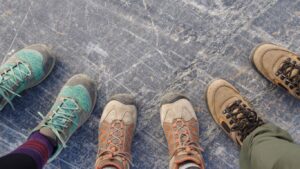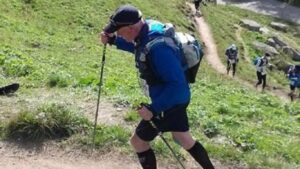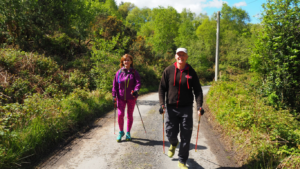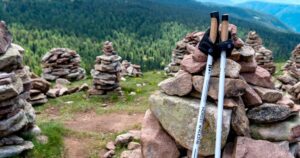Layers Are Key
Starting off, remember that layering is crucial. As you begin your walk, you might feel cool, but soon you’ll warm up. It’s best to wear unrestrictive, lightweight layers that you can easily add or remove. Choose breathable fabrics that wick moisture away from your skin, keeping you comfortable and refreshed throughout your journey.
3 Basic Layers to Know
- Base Layer: This is your moisture-wicking hero, sitting right against your skin, pulling perspiration away to keep you dry. Base layers come in various materials, including synthetic and natural options like merino wool. They can be as simple as a breathable t-shirt or specialised high-tech garments designed for intense activity.
- Mid-Layer: This layer is all about insulation, trapping heat to protect you from the cold. Choices range from fleeces to gilets, and modern technology has allowed for thin yet warm options, suitable even for very chilly conditions.
- Outer Layer: Your shield against the wind and rain. A good outer layer will be both waterproof and breathable, ensuring that you stay dry without trapping sweat. Look for features like taped seams and fabrics like Gore-Tex.
Special Considerations for Each Layer
- Base Layers: Whether it’s summer or winter, the right base layer makes all the difference. In warmer months, lightweight t-shirts or vests suffice, whereas in colder weather, thermal leggings or merino wool tops are preferable.
- Mid-Layers: Depending on the temperature, your mid-layer can vary. Lightweight jackets are perfect for mild days, but when the temperature drops, a down jacket or a heavy fleece might be necessary.
- Outer Layers: Always ensure your outer layer can withstand the elements. Waterproof and windproof capabilities are a must, and features like adjustable hoods and secure pockets add practicality and protection.
Choosing the Right Bottoms and Accessories
- Trousers: Go for materials that allow flexibility and comfort. Avoid jeans as they can become heavy and uncomfortable when wet. Waterproof or water-resistant trousers are essential in unpredictable weather.
- Headgear and Gloves: Don’t overlook these. A good hat or cap can protect you from cold and sun alike. Gloves are crucial for comfort, especially when using walking poles. Choose breathable, well-fitting gloves that accommodate touchscreen use if needed.
Don’t Forget the Socks
A good pair of walking socks is indispensable. They provide cushioning, support, and moisture-wicking to keep your feet dry and comfortable. Consider the thickness and material based on the weather; merino wool is an excellent choice for its balance of warmth and breathability. We personally like compression socks and when combined with Vaseline on our feet we have not suffered blisters even on the longest walks.
Final Tips
Always test your walking attire during shorter walks to adjust for comfort and functionality before heading out on longer treks. And remember, the right clothing not only adds to the enjoyment of your walk but also enhances your performance by keeping you focused and comfortable.
Happy Walking







